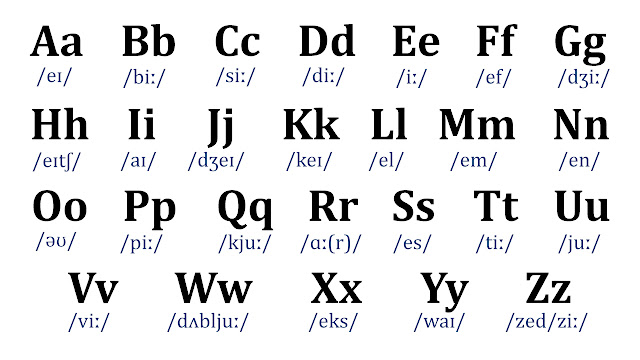An alphabet is a set of written symbols or letters that represent the sounds of a language.
The word alphabet comes from the first two letters of the Greek alphabet: alpha (α) and beta (β).
Letters of the English Alphabet
In the English Alphabet, there are 26 letters. The first letter is A and the last letter is Z.
Let's take a closer look at the English alphabet:
A B C D E F G H I J K L M N O P Q R S T U V W X Y Z
Each letter has its own name and sound. For example, A is pronounced as /ei/, B as /biː/, C as /si:/, and so on.
Small and Capital Letters
Each letter in the English alphabet can be written in two different forms: as a small letter (also called lowercase) or as a capital letter (also called uppercase).
Small letters: a b c d e f g h i j k l m n o p q r s t u v w x y z
Capital letters: A B C D E F G H I J K L M N O P Q R S T U V W X Y Z
Alphabetic order
Alphabetic order is the way we organize words or things based on the order of the letters in the alphabet. It means putting things in order from A to Z.
For example, if we have three words: banana, apple, and carrot. we would put them in alphabetic order like this:
- apple
- banana
- carrot
This means that apple comes first because a comes before b, and carrot comes last because c comes after b.
We often write lists in alphabetical order because it helps us organize information in a clear and systematic way. For example, if you're looking for a particular name in a phone book or a word in a dictionary, alphabetical order helps you locate it without having to search through the entire list.
Fun Facts about the English Alphabet
- Vowels and Consonants: The English Alphabet is divided into two categories: vowels and consonants. The vowels are A, E, I, O, and U. The rest of the letters are consonants.
- Pronunciation: English can be tricky because the pronunciation of certain letters can change depending on their position in a word. For example, the letter C can sound like /k/ in cat or like /s/ in city.
- Letter Combinations: In English, letters often combine to create new sounds. For example, CH makes the sound heard in cheese, SH in shoes, and TH in think.


Comments
Post a Comment